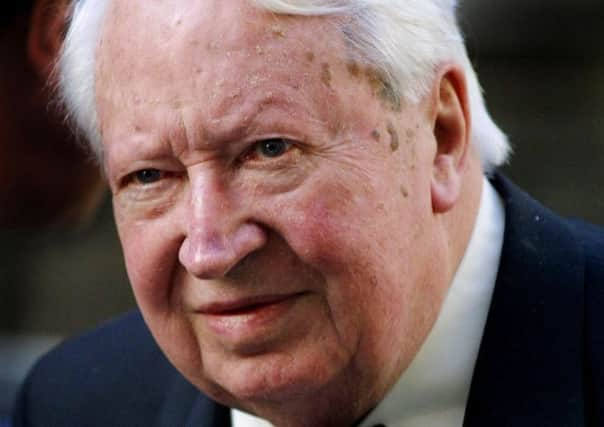Former PM Edward Heath '˜involved in Hooded Men torture decision'


A judge was also told Stormont’s prime minister at the time, Brian Faulkner, was personally briefed on the deployment of techniques which had one of those being held saying he “prayed for death”.
As lawyers for the so-called Hooded Men argued that their treatment was sanctioned by the British State, it was further claimed that a government minister visited a training exercise for the interrogation methods in 1971.
Advertisement
Hide AdAdvertisement
Hide AdDetails emerged during a legal bid in Belfast to secure a fully independent and human rights-compliant investigation into what they were subjected to during the Troubles.
Counsel representing all but one of the group contended that the military taught the torture methods to RUC Special Branch officers who sought assurances of immunity from prosecution before carrying them out.
Hugh Southey QC insisted that any criminal behaviour must be probed, no matter who was involved.
“The allegation in this case is that the decision to sanction that torture was taken by senior ministers,” he said.
Advertisement
Hide AdAdvertisement
Hide Ad“We would argue that the failure to prosecute government ministers has the potential to undermine the rule of law; it suggests impunity, it suggests ministers are above the law.”
Action is being taken against the chief constable, secretary of state and the Department of Justice over alleged failures to properly probe and order a full inquiry.
Five techniques were said to have been used against the men as part of “deep interrogation” while they were held without trial: being hooded and made to stand in a stress position against a wall and beaten if they fell; being forced to listen to constant loud static noise; and the deprival of sleep, food and water.
In a statement one of the group recalled collapsing and being punched in the stomach to revive him.
Advertisement
Hide AdAdvertisement
Hide AdHe was against the wall for three days, subjected to kicks or beatings every time he dropped to the ground or fell asleep, the court heard.
“The applicant described suffering hallucinations and prayed for death,” Mr Southey revealed.
His treatment was said to have resulted in serious psychiatric and psychological consequences, including treatment for post-traumatic stress disorder.
The man disclosed that he still wakes in the middle of the night in a cold sweat.
Advertisement
Hide AdAdvertisement
Hide Ad“On one occasion he awoke crouched in his wardrobe in a deeply distressed state,” his barrister added.
The alleged criminality surrounding the torture has never been properly investigated as part of a deliberate decision to prevent the full truth coming out, it was claimed.
But based on the contents of memos and other documents, Mr Southey said it was not in question that the men were subjected to treatment that violated their human rights.
It was not disputed either that authorisation came from senior government ministers, he added.
Advertisement
Hide AdAdvertisement
Hide AdPapers in the case were said to demonstrate that ministers were aware of what deep interrogation meant.
Mr Justice Maguire was shown references to discussions between the then defence and home secretaries prior to the interrogations starting in August 1971.
“Before the interrogation began the director of intelligence personally explained the techniques to Mr (Brian) Faulkner, who obviously was (Northern Ireland) prime minister at the time,” Mr Southey said.
Despite gaps in the available documentation, he argued that the material pointed to the British prime minister, Mr Heath, being involved in the decision-making process.
Advertisement
Hide AdAdvertisement
Hide AdHe based his claim on details disclosed in papers obtained years later.
The barrister contended: “Civil servants, in around 2000, were clearly concerned that public records would show he played a significant role.”
As the surviving members of the Hooded Men listened in the public gallery, their lawyers went on to claim that a minister for state for defence, Lord Balniel, visited a training exercise to see the techniques in September 1971.
Two of the men behind the legal challenge were said to have been subjected to the torture methods a month later.
Advertisement
Hide AdAdvertisement
Hide AdPart of the case centres on the alleged role played by RUC officers after they were shown the techniques.
Based on further documents, Mr Southey claimed police obtained high-level guarantees they would be protected.
He said: “It’s quite clear the RUC were concerned about what they were being asked to do, they sought assurances ... and those assurances were given at a high ministerial level.”
The case continues.